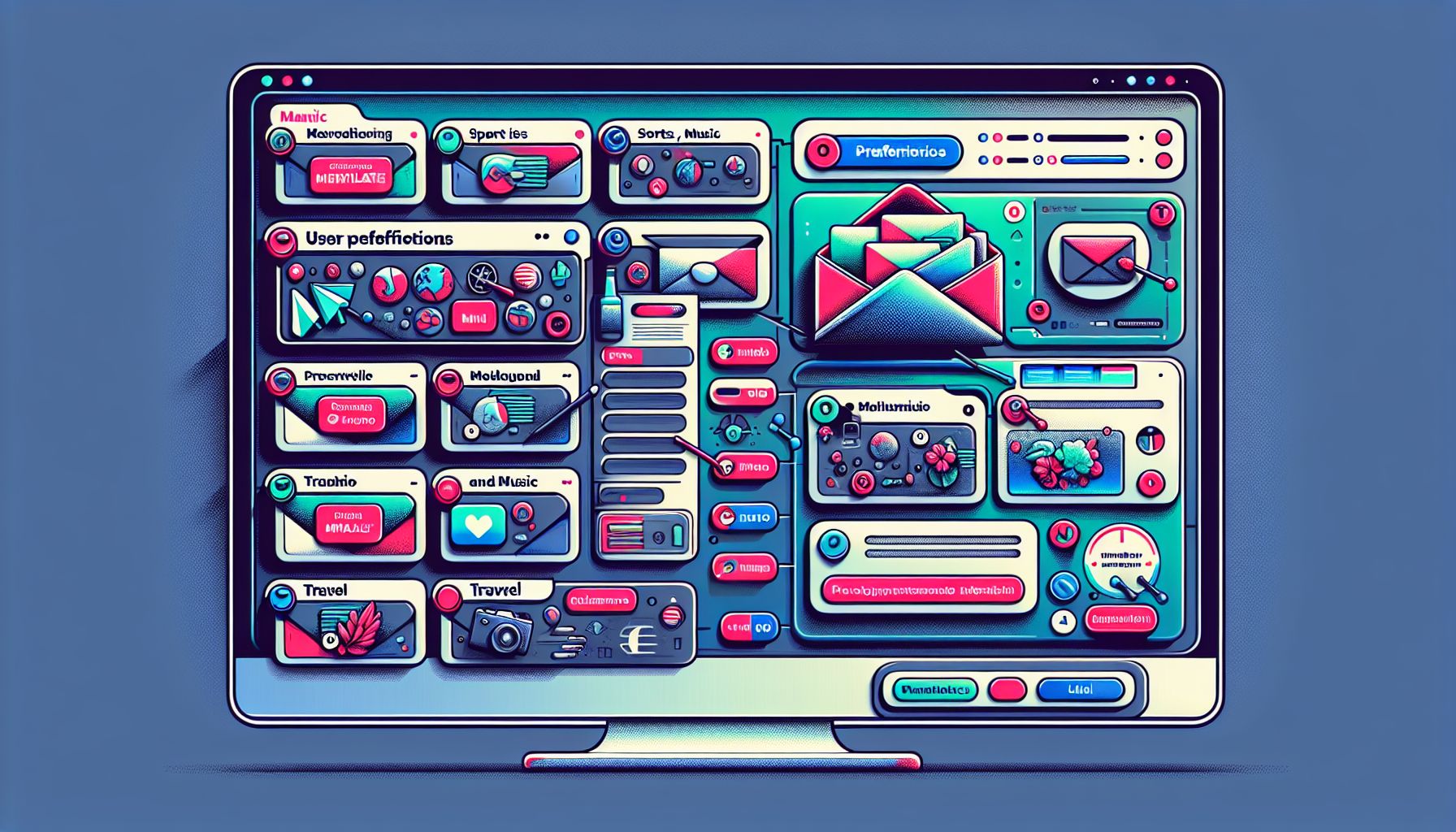📌 Let’s explore the topic in depth and see what insights we can uncover.
⚡ “Ever wondered how Netflix knows you’re a ‘Friends’ fanatic, or Amazon suggests that perfect book you never knew you needed? Welcome to the world of personalized email marketing, where understanding user preferences is the secret sauce to boosting engagement!”
In the digital age where consumers are constantly bombarded with promotional messages, it’s increasingly difficult to stand out from the crowd. One proven method to engage your audience and improve your marketing results is through personalized emails. 🧩 As for These, they’re no longer just a ‘nice-to-have’ but a ‘must-have’ for businesses seeking to build meaningful relationships with their customers. In this blog post, we’re going to delve into the exciting world of personalized emails. We’ll explore why they’re so effective, how you can generate them based on user preferences, and share some practical tips to enhance your email marketing game. So buckle up and get ready for a journey into the heart of personalized email marketing!
💼 Why Personalized Emails?

"Crafting Custom Emails with a Personal Touch"
First, let’s understand why personalized emails are worth your time and effort. Recent research shows that personalized emails deliver six times higher transaction rates and can lift transaction rates and revenue per email significantly. Here’s why:
Tailored content
Personalized emails fit the recipient’s specific needs, interests, and behaviors, making them more relevant and engaging.
Improved relationships
Personalization can enhance customer satisfaction and loyalty, as customers feel valued and understood.
Increased conversions
Because they’re more targeted, personalized emails are more likely to prompt recipients to take action, like clicking a link or making a purchase. In essence, personalized emails help you move away from a ‘one-size-fits-all’ approach, allowing you to treat each recipient as a unique individual. 🎯
🧩 Understanding User Preferences
The first step to creating personalized emails is understanding your users’ preferences. This involves collecting and analyzing data about your subscribers. Here are some data points you might consider:
Demographic data
Age, gender, location, etc.
Behavioral data
Past purchases, browsing history, email interaction, etc.
Self-reported data
Preferences indicated in user profiles or through surveys.
Once you have this data, you can segment your email list into different groups based on shared characteristics or behaviors. For example, you could create a segment for users who frequently purchase a certain product, live in a specific location, or have shown interest in a particular topic. 📊
🛠 Tools for Personalized Emails
Now that you have a segmented list, it’s time to start crafting your personalized emails. Fortunately, there are many powerful email marketing tools out there that can make this process easier. Some popular options include:
Mailchimp
This tool offers advanced segmentation features, allowing you to send targeted emails based on user behavior, preferences, and previous sales.
Campaign Monitor
This platform provides dynamic content features that you can use to change parts of your email content based on each recipient’s specific preferences.
SendinBlue
This service offers a powerful segmentation tool that can help you create highly targeted email campaigns. Remember, the key here is to choose a tool that fits your needs and budget. It’s also important to note that while these tools can automate much of the process, the quality of your personalized emails will still largely depend on your understanding of your audience. 🛠️
📝 Crafting the Perfect Personalized Email
Here are some tips to help you create engaging personalized emails that your subscribers will love:
Use personalization in the subject line
Personalized subject lines are 26% more likely to be opened. Consider including the recipient’s name or a specific detail about them.
Tailor the content to the recipient
Use the data you’ve collected to tailor the email content to the recipient’s interests, needs, and behaviors.
Keep it simple and relevant
Don’t overcomplicate things. Keep your message clear, concise, and focused on the recipient.
Use a clear call-to-action (CTA)
Make it easy for recipients to take the next step, whether that’s clicking a link, making a purchase, or filling out a survey.
Test and optimize
Always be testing different elements of your emails (subject lines, content, CTAs, etc.) to see what works best for your audience. Remember, the key to effective personalization is authenticity. It’s not just about inserting the recipient’s name into the email. It’s about showing that you understand and value them as an individual. 📝
🧭 Conclusion
In our increasingly digital world, personalized emails can be a powerful tool to stand out from the crowd, engage your audience, and drive conversions. By understanding your users’ preferences, leveraging the right tools, and crafting engaging, personalized content, you can take your email marketing game to the next level. Remember, personalization is not a one-time task but an ongoing process. It requires continuous learning, testing, and optimization. But with the right approach and commitment, you can create personalized emails that your subscribers will love and look forward to. Happy emailing! 🚀
🚀 Curious about the future? Stick around for more discoveries ahead!
